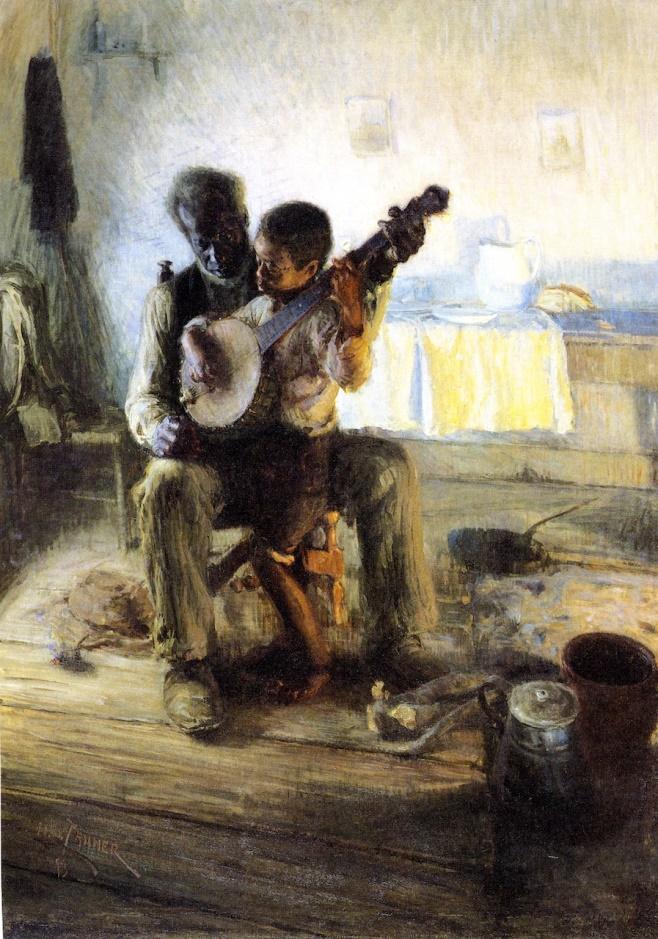
The Banjo Lesson (1893), Oil, 49” x 35.5”. By Henry Ossawa Tanner
Written and Submitted by Carol Hobbs –
Tanner was born in Pittsburg, Pennsylvania in 1859. He decided at the age of 13 that he wanted to become a painter. His father was a minister who was a friend to Frederick Douglass. His mother was born in slavery and freed herself via the Underground Railroad. After five years of study at a prestigious art school in Philadelphia, Pennsylvania, he moved to Atlanta, to teach and to open a gallery to sell his photographs and drawings. His business was not a success and he left to study in Rome. He settled in Paris in 1891 and fell in love with the art city and its lack of racial prejudice. He attended the Academie Julian. In 1893, he briefly lived in Highlands, North Carolina, in the Blue Ridge Mountains to recuperate after suffering from typhoid fever. While there, he made photographs and sketches of the region’s African-American residents.
Tanner painted The Banjo Lesson in 1893, either while in North Carolina or soon after returning to Paris. The painting became his most remembered. He completed a few more paintings based on the sketches he made in North Carolina. Rather than continue his expressive sensitive treatment of African-American subjects, his focus turned to biblical subjects which were better received and more profitable.
During the final decades of Tanner’s career he enjoyed consistent acclaim. In 1900, his 1895 painting, Daniel in the Lion’s Den, was awarded a silver medal at the Universal Exposition in Paris; the following year it received a silver medal at the Pan American exhibition in Buffalo. He was a symbol of hope and inspiration for African-American leaders and black artists. Tanner lived out his life in Paris with his wife, a Swedish-American opera singer. He died in Paris on May 25, 1937.
Sources: Wikipedia, The Clinton White House Archives
